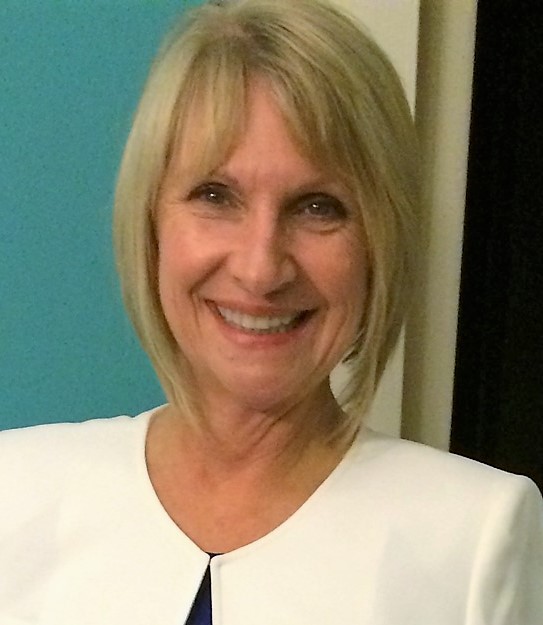Although the stated objective of juvenile justice in Arkansas is rehabilitation, until very recently almost all our juvenile courts followed a cookie-cutter approach in adjudicating cases.
For example, in the Faulkner County Juvenile Court (Arkansas 20th Judicial District) any disposition was standardized in advance, based on the offense. Thus, the sitting judge and any court official already knew what the prosecutor would recommend before court was convened.

Faye Shepherd
The charge of misdemeanor theft of property, for example, would universally result in nine to 12 months’ probation, a $250 fine, $35 court costs and a $20 per month probation fee. Cut. Dried. This method offered the judge no insight for dispositions that both assured the least restrictive alternative for the juvenile and community safety. Juvenile officers working with the adjudicated youth had no roadmap with which to work toward rehabilitation and reduce recidivism.
For more information on Evidence-Based Practices, go to JJIE Resource Hub | Evidence-Based Practices
Luckily, research pointed us toward a more effective approach. In early 2015, the Risk Assessment and Behavioral Health Screening (RABS) program was adopted by our juvenile court and juvenile services department, and it has been a game changer. As one of four pilot courts in the state, our staff employed RABS to address juvenile risk and needs through an initiative promoted by the Arkansas Administrative Office of the Courts.
Our juvenile officers were trained to administer validated assessment tools to either divert or classify the appropriate level of risk/probation supervision required for individual cases. They also make recommendations to the court for services based on an assessment of criminogenic needs that are empirically known to drive delinquent behavior.
Better diversion, risk assessment
As part of our assessment process, we use the Ohio Youth Assessment System (OYAS) to determine if a juvenile offender can be diverted from appearing in court via a diversion process. The prosecutor does not file a delinquency petition unless the diversion is not a success. Since August 2015 (when we began full participation in RABS and implementation of the OYAS diversion instrument) through June 2018, our court has seen a 33 percent decrease in delinquent petitions filed. Consequently, we have been better able to focus our time and resources on cases in which troubled youth are at greater risk to reoffend or harm themselves and others.
For juveniles who do not meet criteria for diversion, petitions are filed to open a case, and families must present themselves to the Juvenile Services Department for the formal intake and assessment process. Juveniles in this classification answer questions from the MAYSI-2 (Massachusetts Youth Screening Instrument), which is designed to identify potential mental health needs.
Our staff also administers another clinical assessment instrument called CRAFFT (an acronym for Car, Relax, Alone, Forget, Friends, Trouble), which is specifically designed to identify adolescent substance abuse problems. The scores from the MAYSI-2 and CRAFFT interview assessments reveal whether the youth needs an immediate acute care assessment or if a mental health evaluation, a substance abuse assessment or dual-diagnosis evaluation should be recommended at the disposition hearing.
Structured Assessment of Violence Risk in Youth (SAVRY) interviews are then conducted by staff officers, with parents and youth interviewed separately. If there are significant discrepancies, parents and children are re-interviewed together to resolve the inconsistencies. Additional information is gathered from therapy and school records, as well as the parents’ criminal histories, if any. The SAVRY is scored after the interview, which tells officers what the juvenile’s risk of reoffending is. Officers then consult a service matrix to determine what available services best match the juvenile’s risk level and assessed needs.
We recruited
Subsequently, a predisposition report is developed, outlining areas of concern, the juvenile’s calculated risk and the appropriate supervision level needed. The report concludes with the staff officer’s professional recommendation for services that addresses both risk and identified needs. These reports are provided to both the defense attorney and prosecutor well before the plea or adjudication take place. The presiding circuit judge, however, does not see the report until after adjudication occurs. This means the judge first renders a finding of “true” or “not true” for the charged offense, then reviews the report’s recommendations.
Juvenile courts and probation departments are typically short on resources and funding. To confront this scarcity in implementing numerous rehabilitative services programs, our court turned to our local community, recruiting numerous volunteers with the message that we all succeed when juveniles are rehabilitated.
For more information on Community-Based Alternatives, go to JJIE Resource Hub | Community-Based Alternatives
As institutional sites for recruiting volunteers, we challenged our community’s two colleges and university to employ service learning opportunities for their students and faculty to teach and mentor our kids. We spoke to civic clubs, faith-based organizations, Girl Scouts, the high schools, the United Way. We presented at any group that was looking for a speaker.
Shakespeare Club? You bet! Women’s groups? Yep. Sports radio? Yes, did that too. And what did we get for our trouble? We discovered a wealth of good will and concerned and caring people who are eager to help.
Volunteers have stepped up
Here are some of the service programs we have instituted that offer solutions in response to basic criminogenic needs identified in our juvenile assessment data:
Need: School failure/low commitment to school.
Service program: Tutoring in any subject by university service-learning students, plus an academic summer camp staffed by public school teachers who address each youth’s educational hardships, offering either maintenance of skills or remediation.
Need: Employment.
Service program: Referrals to a summer jobs program through a coalition of three different community agencies.
Need: Substance abuse.
Service program: Enrollment in the Juvenile Drug Court through which they participate in Kai, a group organized and facilitated by the local university’s occupational therapy program that addresses goal setting and supports sobriety.
Need: Negative peer relations.
Service programs: Boxing club for boys at a local gym and a Girl Scout troop for girls.
Need: Empathy development.
Service programs: Moral dilemmas class conducted by a local philosophy professor; enrollment in an Unsheltered Lives (understanding homelessness) program.
Furthermore, most of our youth need protection from negative environmental factors. To that end, we assign volunteer mentors to offer positive social support and enroll them in an internet safety class taught by local detectives, the juvenile judge and the state attorney general’s office. We offer yoga classes and a girls’ book club facilitated by female college interns; courses in auto mechanics, sewing, crocheting, and knitting, all taught by adult volunteers. This is just a sample of what our community and yours can provide for these kids, our kids, the community’s kids.
What does the community get in return? My community of Conway, Ark., has enjoyed a 47 percent reduction in juvenile recidivism, as well as a significant reduction in secure confinements — confinements that research shows greatly increase the chances of juveniles reoffending.
Perhaps most importantly, we have learned that volunteer citizens from the community embrace the opportunity to give something of themselves to others in need, that they cherish the experience of seeing a young person changed for the better. That’s a win for the community and all our kids!
Faye Shepherd is the juvenile justice specialist for the Arkansas Administrative Office of the Courts. She served as Judge Troy Braswell’s chief of staff for almost four years before that.


Pingback: Higher Screening Plus Beefed-up Rehabilitation Companies Squeeze Our Recidivism Charge | Cheap Knee Braces